1 of 12
Downloaded 144 times
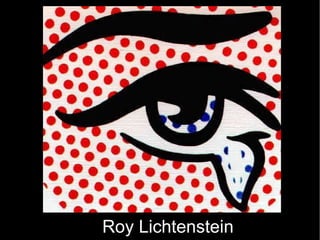
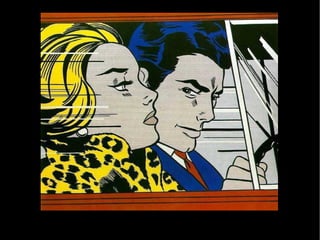
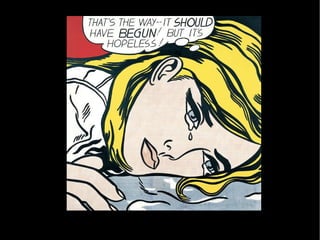




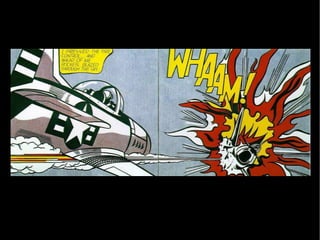

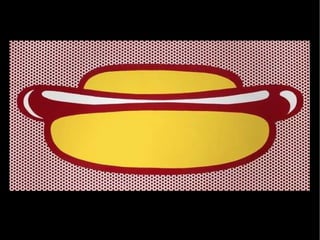

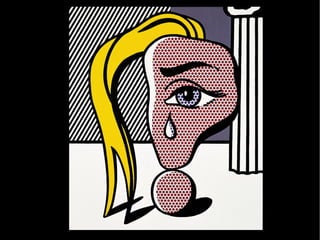
Ad
Recommended
LA PINTURA NEOCL├üSICATom├Īs P├®rez Molina
╠²
La pintura neocl├Īsica, influenciada por la escasez de modelos antiguos, fue marcada por la b├║squeda de simetr├Ła y raz├│n enfatizando virtudes ciudadanas a trav├®s de temas de la literatura cl├Īsica. Jacques-Louis David fue un destacado exponente de esta corriente, creando obras que combinaban el dibujo preciso y la ausencia de ornamentaci├│n, reflejando tanto hechos heroicos antiguos como contempor├Īneos. Su trabajo, que incluye piezas significativas como 'El juramento de los horacios' y retratos de figuras relevantes, define el gusto art├Łstico de su ├®poca.La Imagen Figurativa Realista y No Realistaelprofeleo
╠²
El documento habla sobre la imagen figurativa y el realismo en el arte. Explica que la imagen figurativa representa objetos y seres vivos de manera realista utilizando t├®cnicas como el uso preciso de la luz, el color y la textura para lograr que las im├Īgenes se parezcan a la realidad. Tambi├®n presenta ejemplos de obras de arte que ilustran diferentes aspectos del realismo como la representaci├│n detallada de vestimentas, frutas, paisajes y m├Īs.Acrylic Basics & More
Acrylic Basics & Moreakullaf
╠²
This document provides an overview and summary of a 6-week course on drawing and painting with acrylics. The course will cover acrylic materials and techniques, color theory basics, and principles of composition. Specific topics include working transparently with water, layering techniques using mediums, using a limited palette, creating balance through shapes and values, and incorporating acrylics into mixed media works. Examples of the instructor's acrylic paintings are included to illustrate techniques.Still life drawing
Still life drawingJason Eoff
╠²
This document provides instructions for a still life drawing exercise using chiaroscuro techniques. It recommends setting up a simple still life with directional lighting to create shadows and highlights. The instructions describe toning the paper with charcoal dust, then lightly sketching the composition and adding darks with charcoal while subtracting lights with an eraser. Finishing touches include ensuring outlines belong to objects or the background and leaving some objects extending off the edges. The goal is to create a naturalistic drawing using the subtractive and additive process.Optical illusions bridget riley1
Optical illusions bridget riley1gmoustaka
╠²
This document provides information about optical illusions and the Op Art movement. It discusses how Op Art uses geometric designs and shapes to create sensations of movement and vibration. The document focuses on the artist Bridget Riley, a pioneer of Op Art in the 1960s. It includes facts about Op Art and guides students to create their own copy of one of Bridget Riley's works titled "Movement in Squares".Raja ravi varma
Raja ravi varmajpratimalakshmi123
╠²
Raja Ravi Varma was an Indian painter from the late 19th century who achieved fame for his paintings depicting scenes from Indian literature and mythology. He learned painting techniques from both Indian and European masters. Varma received widespread acclaim after winning awards for his paintings in exhibitions in Vienna and Chicago. He is considered one of the greatest Indian painters for his fusion of Indian traditions with academic European techniques. Many of his paintings of Hindu gods and goddesses are now iconic representations in Indian culture.Foreshortening ppt
Foreshortening pptmarsha devine
╠²
The document discusses the technique of foreshortening in drawing, which makes objects or body parts that are closer to the viewer appear larger than those further away to create the illusion of depth. It provides examples of foreshortening mistakes from comic book drawings and tips for artists on how to properly apply foreshortening through sighting techniques, maintaining your drawing position, and breaking figures down into geometric forms before applying perspective. References for further reading on foreshortening and perspective techniques are also included.Kandinsky and colours
Kandinsky and colourspam00077
╠²
The document provides instructions for students to create a circles painting inspired by abstract artist Wassily Kandinsky. It includes information about Kandinsky's life and work, techniques for mixing colors, and step-by-step directions for the painting activity. The goals are for students to learn about Kandinsky, mix their own colors, and use those colors to paint a non-representational circles composition in the style of the artist.Edgar Degashavalover
╠²
Edgar Degas fue un pintor franc├®s nacido en 1834. Se form├│ estudiando a los grandes maestros durante un viaje a Italia y fue influenciado por artistas como Ingres, Delacroix y Manet. Aunque pint├│ retratos y escenas hist├│ricas en sus inicios, se hizo famoso por sus pinturas y grabados de bailarinas y escenas de la vida moderna en Par├Łs. Trabaj├│ con los impresionistas pero mantuvo un estilo m├Īs realista. Adem├Īs de la pintura, explor├│ la escultura, elCoil pot presentation, ceramics lesson plan
Coil pot presentation, ceramics lesson planMichelle Kern
╠²
The document describes coil pottery techniques used to create Egyptian canopic jars, which were designed to hold embalmed organs of nobility. It explains the process of starting with a base coil, adding layers to form a vase, and emphasizes the importance of blending coils for structural integrity. Additionally, it highlights various design possibilities, including decorative techniques and glazing options, while mentioning influences from ancient cultures.Painting and Drawing
Painting and DrawingAngela Clarke
╠²
The document explores the history and evolution of drawing, detailing its significance from ancient art to modernism, and the various techniques and materials used over time. It covers essential periods such as the Renaissance, Baroque, and 19th-century movements like Romanticism, as well as the development of drawing media and techniques. Additionally, it discusses the artistic concepts of perspective, symbolism, and composition in relation to drawing.ClaroscuroMarinale
╠²
Este documento describe los principios b├Īsicos del claroscuro y c├│mo se crea volumen a trav├®s del juego de luces y sombras. Explica que los objetos se distinguen del fondo cuando son iluminados debido a su relieve, y que todas las superficies tienen zonas de sombra y luz proyectada. Adem├Īs, describe diferentes t├®cnicas como el sombreado, la grisalla y el uso de manchas para crear claroscuro en dibujos.James rizzi
James rizziGeorge Kelly Elementary
╠²
James Rizzi was a modern pop artist known for his 3D paper sculptures and playful, childlike forms featuring bright colors. He applied his distinctive artistic style to a wide variety of everyday objects, from stamps and puzzles to houses, jets, and trains. Rizzi spent his life in New York and often depicted people and buildings in his paintings and sculptures, using simple geometric shapes, lines, and vivid hues to bring his subjects to life with character.Impressionism
ImpressionismAnadelaFuente5
╠²
Impressionism was a 19th century art movement that began in France. It was characterized by visible brushstrokes, attention to the effects of light and color, and the depiction of modern life. The movement took its name from Claude Monet's painting Impression, Sunrise. Some of the most famous Impressionist artists included Claude Monet, Pierre-Auguste Renoir, Edgar Degas, Alfred Sisley, and Camille Pissarro. Their works, such as Monet's series of Rouen Cathedral paintings and Renoir's Luncheon of the Boating Party, focused on capturing fleeting moments and the changing effects of light.Post impressionism class lec.
Post impressionism class lec.Sana Horani
╠²
Neo-Impressionism and Post-Impressionism developed in France between 1885-1910 as artists extended Impressionism while rejecting its limitations. Pointillism carried Impressionism's color and optical ideas to a scientific extreme using tiny dots of paint. Paul Gauguin rejected Impressionism's naturalism, developing a Primitivist style influenced by folk art with exaggerated proportions and stark contrasts. His bold colors helped achieve success. Vincent van Gogh's emotional works had a frenzied production and immense influence despite selling few in his lifetime. Paul C├®zanne's still lifes and landscapes formed a bridge between Impressionism and early 20th century Cubism.Op Art
Op Artisabelri
╠²
Optical Art, also known as Op Art, uses simple shapes and colors to create visual effects like vibrating patterns, blurred lines between foreground and background, exaggerated depth perception, and other illusions. In the 1960s, the term "Op Art" was coined to describe abstract paintings by artists like Victor Vasarely and Bridget Riley, who led the movement. Their works used repetition and geometric shapes to create the impression of movement or shifting perspective in the eye of the viewer.Tema 9. acuarelaPaula Iglesias
╠²
El documento describe la t├®cnica de la acuarela, incluyendo que usa pigmentos diluidos en agua y se aplican en capas transparentes. Explica los diferentes modos de empleo como lavados, aguadas y veladuras, y los diversos pinceles y soportes utilizados. Tambi├®n resume las ├®pocas y artistas destacados que usaron esta t├®cnica, como Durero, Turner, Monet y Miquel Barcel├│.Wayne thiebaud
Wayne thiebaudwoolridgep
╠²
Wayne Thiebaud is an American painter born in 1920 in Arizona. He is known for his realistic pop art paintings of everyday objects found in cafeterias and diners, such as pies and pastries. Thiebaud's paintings use elements of art like contour lines, shapes, forms, color, texture, space, and value to create realistic representations of food that explore themes like memories and consumer culture.Different art forms of India
Different art forms of IndiaNavaneeth Shetty
╠²
This document summarizes different art forms found in India, including:
- Mural paintings found in Kerala depicting mythology and legends.
- Pahari paintings from Himachal Pradesh depicting the Himalayan landscape.
- Madhubani paintings traditionally created by women in Bihar on walls and cloth with themes of gods and nature.
- Warli folk paintings from Maharashtra used to transmit stories in tribal villages without writing.
- Mysore paintings known for their elegance and attention to detail depicting Hindu gods and mythology.Atmospheric Perspective
Atmospheric PerspectiveArtfulArtsyAmy
╠²
Atmospheric perspective is a technique used by artists to depict distance. Objects that are closer appear larger and have brighter, more vivid colors, while objects farther away appear smaller, paler, and may even appear blurry. Several examples are provided of photographs and paintings demonstrating these effects, such as mountains becoming paler in color with increasing distance and the sun appearing smaller than a person due to its vast distance from Earth.Los postimpresionistas M├│nica Salandr├║
╠²
El documento analiza las caracter├Łsticas del posimpresionismo, destacando su inter├®s por la forma, el dibujo y el uso emotivo del color. Se enfoca en artistas como Vincent van Gogh, Paul Gauguin y Henri Toulouse-Lautrec, quienes influyeron significativamente en el arte posterior con sus estilos ├║nicos y sus obras emblem├Īticas. Adem├Īs, menciona las evoluciones de la pintura hacia composiciones m├Īs abstractas y la b├║squeda de expresividad m├Īs all├Ī de la representaci├│n realista.Op artlemondearts
╠²
El Op Art fue un estilo de arte abstracto que utiliz├│ la repetici├│n de formas simples y colores para crear efectos visuales como vibraci├│n y profundidad exagerada. Surgi├│ en la d├®cada de 1960 y fue liderado por artistas como Victor Vasarely y Bridget Riley, quienes crearon obras con cuadrados y c├Łrculos que parec├Łan moverse u ondularse. Matilde P├®rez fue una importante exponente chilena de este estilo cin├®tico que comenz├│ como pintora figurativa pero luego se enfoc├│ en los efectos visuales deSayre woa ch03_lecture-243766
Sayre woa ch03_lecture-243766Alexa Wheeler, University of New Mexico Valencia
╠²
The document discusses the element of line in visual art. It begins by defining different types of lines such as outline, contour, and implied lines. It explores the qualities lines can possess including direction, thickness, and movement. Specific artworks are analyzed to showcase different applications of lines, such as the expressive, loose lines in Van Gogh's The Starry Night compared to the rigid, structured lines of Sol LeWitt's wall drawings. The document also examines how artists such as Hung Liu have used lines and the drip technique in their creative process.Perspective drawing
Perspective drawingcequinn1
╠²
Linear perspective is a technique used in drawings to depict three-dimensional depth on a two-dimensional surface. It was developed in the 15th century and deals with the orientation and location of shapes in space. Key terms in linear perspective include the horizon line, vertical lines, horizontal lines, orthogonal lines that meet at a vanishing point, and the types of perspective drawings which vary based on the number of vanishing points used.PerspectivaAlfredo Torres
╠²
Este documento describe diferentes tipos de perspectiva utilizados en el arte, incluyendo la perspectiva lineal, a├®rea, paralela, oblicua, invertida, de importancia, axonom├®trica, caballera y c├│nica. Explica c├│mo cada una simula la profundidad y posici├│n de los objetos de manera diferente a trav├®s del uso de l├Łneas convergentes, divergentes y paralelas, y c├│mo la perspectiva nos ayuda a crear una sensaci├│n de espacio tridimensional en una superficie bidimensional.Gesture Drawing
Gesture DrawingRiverwood HS
╠²
Gesture drawing is a technique used by artists to quickly sketch the pose and motion of a subject through directional lines and basic shapes before adding detail. It involves observing the subject to understand how different body parts relate and move, then using quick sketches to capture the pose and flow of motion in a few lines and shapes rather than focusing on realistic details. Gesture drawing helps artists train their hands to rapidly translate what they see into basic representations and prepares them for finished works by planning the composition through these quick sketches.Jamini roy
Jamini royChinmayiPandey
╠²
Jamini Roy was an Indian painter born in 1887 in West Bengal who is considered a pioneer of modern Indian art. He was influenced by Kalighat paintings and gave up on Western styles to focus on simplifying and portraying the lives of common people through folk art. Some of his most famous works include the Ramayana series painted in 1946, Bride and Two Companions from 1952, and his Krishna and Radha series. Roy received several honors including the Padma Bhushan and helped popularize Indian art among the middle class. He died in 1972 in Kolkata at the age of 85.Kehinde Wiley Graphite Portrait
Kehinde Wiley Graphite PortraitJoe Turek
╠²
The document outlines a lesson plan for creating portraits in the style of Kehinde Wiley, focusing on using graphite and tessellated backgrounds. Students will utilize a grid method to achieve a realistic representation of themselves, while also learning about tessellation techniques to enhance their artwork. It provides specific details on materials and methods for students to follow in their creative process.Roy lichtenstein
Roy lichtensteinRodriguez Lehmann
╠²
Roy Lichtenstein was an American pop artist known for his paintings that emulated comic book panels through thick outlines, Ben-Day dots for shading, and words like "takka takka." He began creating pop art paintings in 1961 after his son challenged him to paint as well as a comic book. Lichtenstein took inspiration from commercial art and comic books, enlarging and exaggerating their techniques in his work.Lichtenstein PROJECT
Lichtenstein PROJECTropergo
╠²
Roy Lichtenstein was an American pop artist known for painting cartoon characters from comics in a pop art style using bold colors and dots. He was inspired by comics after studying art in university but interrupting his studies to serve in World War 2. One of his most famous paintings is Drowning Girl, where he adapted the comic book style to fine art.More Related Content
What's hot (20)
Edgar Degashavalover
╠²
Edgar Degas fue un pintor franc├®s nacido en 1834. Se form├│ estudiando a los grandes maestros durante un viaje a Italia y fue influenciado por artistas como Ingres, Delacroix y Manet. Aunque pint├│ retratos y escenas hist├│ricas en sus inicios, se hizo famoso por sus pinturas y grabados de bailarinas y escenas de la vida moderna en Par├Łs. Trabaj├│ con los impresionistas pero mantuvo un estilo m├Īs realista. Adem├Īs de la pintura, explor├│ la escultura, elCoil pot presentation, ceramics lesson plan
Coil pot presentation, ceramics lesson planMichelle Kern
╠²
The document describes coil pottery techniques used to create Egyptian canopic jars, which were designed to hold embalmed organs of nobility. It explains the process of starting with a base coil, adding layers to form a vase, and emphasizes the importance of blending coils for structural integrity. Additionally, it highlights various design possibilities, including decorative techniques and glazing options, while mentioning influences from ancient cultures.Painting and Drawing
Painting and DrawingAngela Clarke
╠²
The document explores the history and evolution of drawing, detailing its significance from ancient art to modernism, and the various techniques and materials used over time. It covers essential periods such as the Renaissance, Baroque, and 19th-century movements like Romanticism, as well as the development of drawing media and techniques. Additionally, it discusses the artistic concepts of perspective, symbolism, and composition in relation to drawing.ClaroscuroMarinale
╠²
Este documento describe los principios b├Īsicos del claroscuro y c├│mo se crea volumen a trav├®s del juego de luces y sombras. Explica que los objetos se distinguen del fondo cuando son iluminados debido a su relieve, y que todas las superficies tienen zonas de sombra y luz proyectada. Adem├Īs, describe diferentes t├®cnicas como el sombreado, la grisalla y el uso de manchas para crear claroscuro en dibujos.James rizzi
James rizziGeorge Kelly Elementary
╠²
James Rizzi was a modern pop artist known for his 3D paper sculptures and playful, childlike forms featuring bright colors. He applied his distinctive artistic style to a wide variety of everyday objects, from stamps and puzzles to houses, jets, and trains. Rizzi spent his life in New York and often depicted people and buildings in his paintings and sculptures, using simple geometric shapes, lines, and vivid hues to bring his subjects to life with character.Impressionism
ImpressionismAnadelaFuente5
╠²
Impressionism was a 19th century art movement that began in France. It was characterized by visible brushstrokes, attention to the effects of light and color, and the depiction of modern life. The movement took its name from Claude Monet's painting Impression, Sunrise. Some of the most famous Impressionist artists included Claude Monet, Pierre-Auguste Renoir, Edgar Degas, Alfred Sisley, and Camille Pissarro. Their works, such as Monet's series of Rouen Cathedral paintings and Renoir's Luncheon of the Boating Party, focused on capturing fleeting moments and the changing effects of light.Post impressionism class lec.
Post impressionism class lec.Sana Horani
╠²
Neo-Impressionism and Post-Impressionism developed in France between 1885-1910 as artists extended Impressionism while rejecting its limitations. Pointillism carried Impressionism's color and optical ideas to a scientific extreme using tiny dots of paint. Paul Gauguin rejected Impressionism's naturalism, developing a Primitivist style influenced by folk art with exaggerated proportions and stark contrasts. His bold colors helped achieve success. Vincent van Gogh's emotional works had a frenzied production and immense influence despite selling few in his lifetime. Paul C├®zanne's still lifes and landscapes formed a bridge between Impressionism and early 20th century Cubism.Op Art
Op Artisabelri
╠²
Optical Art, also known as Op Art, uses simple shapes and colors to create visual effects like vibrating patterns, blurred lines between foreground and background, exaggerated depth perception, and other illusions. In the 1960s, the term "Op Art" was coined to describe abstract paintings by artists like Victor Vasarely and Bridget Riley, who led the movement. Their works used repetition and geometric shapes to create the impression of movement or shifting perspective in the eye of the viewer.Tema 9. acuarelaPaula Iglesias
╠²
El documento describe la t├®cnica de la acuarela, incluyendo que usa pigmentos diluidos en agua y se aplican en capas transparentes. Explica los diferentes modos de empleo como lavados, aguadas y veladuras, y los diversos pinceles y soportes utilizados. Tambi├®n resume las ├®pocas y artistas destacados que usaron esta t├®cnica, como Durero, Turner, Monet y Miquel Barcel├│.Wayne thiebaud
Wayne thiebaudwoolridgep
╠²
Wayne Thiebaud is an American painter born in 1920 in Arizona. He is known for his realistic pop art paintings of everyday objects found in cafeterias and diners, such as pies and pastries. Thiebaud's paintings use elements of art like contour lines, shapes, forms, color, texture, space, and value to create realistic representations of food that explore themes like memories and consumer culture.Different art forms of India
Different art forms of IndiaNavaneeth Shetty
╠²
This document summarizes different art forms found in India, including:
- Mural paintings found in Kerala depicting mythology and legends.
- Pahari paintings from Himachal Pradesh depicting the Himalayan landscape.
- Madhubani paintings traditionally created by women in Bihar on walls and cloth with themes of gods and nature.
- Warli folk paintings from Maharashtra used to transmit stories in tribal villages without writing.
- Mysore paintings known for their elegance and attention to detail depicting Hindu gods and mythology.Atmospheric Perspective
Atmospheric PerspectiveArtfulArtsyAmy
╠²
Atmospheric perspective is a technique used by artists to depict distance. Objects that are closer appear larger and have brighter, more vivid colors, while objects farther away appear smaller, paler, and may even appear blurry. Several examples are provided of photographs and paintings demonstrating these effects, such as mountains becoming paler in color with increasing distance and the sun appearing smaller than a person due to its vast distance from Earth.Los postimpresionistas M├│nica Salandr├║
╠²
El documento analiza las caracter├Łsticas del posimpresionismo, destacando su inter├®s por la forma, el dibujo y el uso emotivo del color. Se enfoca en artistas como Vincent van Gogh, Paul Gauguin y Henri Toulouse-Lautrec, quienes influyeron significativamente en el arte posterior con sus estilos ├║nicos y sus obras emblem├Īticas. Adem├Īs, menciona las evoluciones de la pintura hacia composiciones m├Īs abstractas y la b├║squeda de expresividad m├Īs all├Ī de la representaci├│n realista.Op artlemondearts
╠²
El Op Art fue un estilo de arte abstracto que utiliz├│ la repetici├│n de formas simples y colores para crear efectos visuales como vibraci├│n y profundidad exagerada. Surgi├│ en la d├®cada de 1960 y fue liderado por artistas como Victor Vasarely y Bridget Riley, quienes crearon obras con cuadrados y c├Łrculos que parec├Łan moverse u ondularse. Matilde P├®rez fue una importante exponente chilena de este estilo cin├®tico que comenz├│ como pintora figurativa pero luego se enfoc├│ en los efectos visuales deSayre woa ch03_lecture-243766
Sayre woa ch03_lecture-243766Alexa Wheeler, University of New Mexico Valencia
╠²
The document discusses the element of line in visual art. It begins by defining different types of lines such as outline, contour, and implied lines. It explores the qualities lines can possess including direction, thickness, and movement. Specific artworks are analyzed to showcase different applications of lines, such as the expressive, loose lines in Van Gogh's The Starry Night compared to the rigid, structured lines of Sol LeWitt's wall drawings. The document also examines how artists such as Hung Liu have used lines and the drip technique in their creative process.Perspective drawing
Perspective drawingcequinn1
╠²
Linear perspective is a technique used in drawings to depict three-dimensional depth on a two-dimensional surface. It was developed in the 15th century and deals with the orientation and location of shapes in space. Key terms in linear perspective include the horizon line, vertical lines, horizontal lines, orthogonal lines that meet at a vanishing point, and the types of perspective drawings which vary based on the number of vanishing points used.PerspectivaAlfredo Torres
╠²
Este documento describe diferentes tipos de perspectiva utilizados en el arte, incluyendo la perspectiva lineal, a├®rea, paralela, oblicua, invertida, de importancia, axonom├®trica, caballera y c├│nica. Explica c├│mo cada una simula la profundidad y posici├│n de los objetos de manera diferente a trav├®s del uso de l├Łneas convergentes, divergentes y paralelas, y c├│mo la perspectiva nos ayuda a crear una sensaci├│n de espacio tridimensional en una superficie bidimensional.Gesture Drawing
Gesture DrawingRiverwood HS
╠²
Gesture drawing is a technique used by artists to quickly sketch the pose and motion of a subject through directional lines and basic shapes before adding detail. It involves observing the subject to understand how different body parts relate and move, then using quick sketches to capture the pose and flow of motion in a few lines and shapes rather than focusing on realistic details. Gesture drawing helps artists train their hands to rapidly translate what they see into basic representations and prepares them for finished works by planning the composition through these quick sketches.Jamini roy
Jamini royChinmayiPandey
╠²
Jamini Roy was an Indian painter born in 1887 in West Bengal who is considered a pioneer of modern Indian art. He was influenced by Kalighat paintings and gave up on Western styles to focus on simplifying and portraying the lives of common people through folk art. Some of his most famous works include the Ramayana series painted in 1946, Bride and Two Companions from 1952, and his Krishna and Radha series. Roy received several honors including the Padma Bhushan and helped popularize Indian art among the middle class. He died in 1972 in Kolkata at the age of 85.Kehinde Wiley Graphite Portrait
Kehinde Wiley Graphite PortraitJoe Turek
╠²
The document outlines a lesson plan for creating portraits in the style of Kehinde Wiley, focusing on using graphite and tessellated backgrounds. Students will utilize a grid method to achieve a realistic representation of themselves, while also learning about tessellation techniques to enhance their artwork. It provides specific details on materials and methods for students to follow in their creative process.Viewers also liked (20)
Roy lichtenstein
Roy lichtensteinRodriguez Lehmann
╠²
Roy Lichtenstein was an American pop artist known for his paintings that emulated comic book panels through thick outlines, Ben-Day dots for shading, and words like "takka takka." He began creating pop art paintings in 1961 after his son challenged him to paint as well as a comic book. Lichtenstein took inspiration from commercial art and comic books, enlarging and exaggerating their techniques in his work.Lichtenstein PROJECT
Lichtenstein PROJECTropergo
╠²
Roy Lichtenstein was an American pop artist known for painting cartoon characters from comics in a pop art style using bold colors and dots. He was inspired by comics after studying art in university but interrupting his studies to serve in World War 2. One of his most famous paintings is Drowning Girl, where he adapted the comic book style to fine art.Roy lichtenstein pop artist
Roy lichtenstein pop artistCristen Hess
╠²
Roy used basic geometric shapes, lines, and black outlines with primary colors in a pop art style. His artwork featured lines, shapes, dots, and black outlines using bold primary colors common in pop art. The key elements in Roy's pop art style included primary colors, lines, shapes, dots, and black outlines.ROY LICHTENSTEINAna Rey
╠²
Este documento analiza la d├®cada de 1960 como un per├Łodo crucial en el desarrollo del arte contempor├Īneo. Se produjo una gran mutaci├│n con el declive del Informalismo y el surgimiento de nuevas tendencias como el Pop Art en respuesta a la falta de expresi├│n del arte abstracto. La incorporaci├│n de objetos de consumo transform├│ el significado de las im├Īgenes y sacudi├│ al espectador. El traslado del foco art├Łstico desde Par├Łs a Nueva York hizo que los 1960 fueran decisivos con el surgimiento de la Posmodernidad en la siguiente d├®cRoy Lichtenstein
Roy Lichtensteinmjarry
╠²
Roy Lichtenstein was an American pop artist best known for adapting comic strips and advertisements into large-scale paintings in the 1960s. His work Takka Takka from 1962 was painted in an abstract expressionist style, but from 1961 onward he began incorporating cartoon images and advertising imagery into his paintings. Works like Whaam! from 1963 recreated comic book scenes using techniques like Benday dots to mimic the mechanical printing process. Lichtenstein's pop art works referenced mass media while transforming the source material in colorful, geometric compositions that commented on postwar consumer culture.Pop Art Powerpoint
Pop Art Powerpoint stevenmurphy
╠²
Pop Art began in the 1950s in London as a reaction against abstract expressionism. It focused on mass production and popular culture by using images and objects from advertisements, comics, and everyday culture. Some of the most influential pop artists included Andy Warhol, who produced iconic pop images of celebrities and consumer goods, Roy Lichtenstein, known for his comic book-inspired works, and Robert Rauschenberg, a pioneer of combining diverse media into "combines." Pop Art spread to the United States and represented lighthearted popular themes through techniques like duplication and serialization.Pop-art. Lecture
Pop-art. LectureAndrey Kovalev
╠²
ąöąŠą║čāą╝ąĄąĮčé ą┐čĆąĄą┤čüčéą░ą▓ą╗čÅąĄčé čüąŠą▒ąŠą╣ ąŠą▒ąĘąŠčĆ ą┐čĆąŠąĖąĘą▓ąĄą┤ąĄąĮąĖą╣ ąĖčüą║čāčüčüčéą▓ą░, čüą▓čÅąĘą░ąĮąĮčŗčģ čü ą┐ąŠą┐-ą░čĆč鹊ą╝ ąĖ ąĮąĄąŠą┤ą░ą┤ą░ąĖąĘą╝ąŠą╝, ą▓ą║ą╗čÄčćą░čÅ čĆą░ą▒ąŠčéčŗ čéą░ą║ąĖčģ čģčāą┤ąŠąČąĮąĖą║ąŠą▓, ą║ą░ą║ ąĀąŠą╣ ąøąĖčģč鹥ąĮčłč鹥ą╣ąĮ, ąŁąĮą┤ąĖ ąŻąŠčĆčģąŠą╗ ąĖ ąĀąĖčćą░čĆą┤ ąōą░ą╝ąĖą╗čīč鹊ąĮ. ąÆ č鹥ą║čüč鹥 ąŠą▒čüčāąČą┤ą░čÄčéčüčÅ ąĖą┤ąĄąĖ ąŠ ą▓ą╗ąĖčÅąĮąĖąĖ ą╝ą░čüčüąŠą▓ąŠą╣ ą║čāą╗čīčéčāčĆčŗ ąĮą░ ąĖčüą║čāčüčüčéą▓ąŠ ąĖ ą┐ąĄčĆąĄąŠčüą╝čŗčüą╗ąĄąĮąĖąĖ čŹčüč鹥čéąĖč湥čüą║ąĖčģ čåąĄąĮąĮąŠčüč鹥ą╣. ąóą░ą║ąČąĄ čāą┐ąŠą╝ąĖąĮą░čÄčéčüčÅ ą▓čŗčüčéą░ą▓ą║ąĖ ąĖ ą▓ą░ąČąĮčŗąĄ čģčāą┤ąŠąČąĄčüčéą▓ąĄąĮąĮčŗąĄ ą┤ą▓ąĖąČąĄąĮąĖčÅą╝ąĖ, ą║ąŠč鹊čĆčŗąĄ ąŠčéčĆą░ąČą░čÄčé čüąŠčåąĖą░ą╗čīąĮčŗąĄ ąĖ ą║čāą╗čīčéčāčĆąĮčŗąĄ ąĖąĘą╝ąĄąĮąĄąĮąĖčÅ čüą▓ąŠąĄą│ąŠ ą▓čĆąĄą╝ąĄąĮąĖ.Roy Lichtensteincomplementoindirecto
╠²
Roy Lichtenstein foi um pintor norte-americano e um dos principais artistas do movimento pop art. Ele se inspirou em hist├│rias em quadrinhos para criar obras que criticavam a sociedade de consumo dos Estados Unidos atrav├®s do uso de cores vibrantes e formas simplificadas. Lichtenstein teve grande reconhecimento ao longo de sua carreira, recebendo v├Īrios t├Łtulos honor├Łficos e se tornando membro de importantes academias.Roy lichtenstein
Roy lichtensteinourbloggish
╠²
Roy Lichtenstein was an American pop artist born in New York in 1923 who died in 1997. He studied at Ohio State University before having his first solo exhibition in New York in 1951. In the late 1950s and early 1960s, Lichtenstein produced paintings that borrowed images from comic strips and advertisements, including 1963's "Drowning Girl" and 1961's "Wham!", establishing him as a pioneer of pop art.A Lesson in Pop Art
A Lesson in Pop Artalimy1ae
╠²
The document discusses the Pop Art movement that emerged in the 1950s and gained popularity in the 1960s, characterized by themes from mass culture such as food, advertising, and household objects. Key artists, including Andy Warhol, Roy Lichtenstein, and Claes Oldenburg, utilized bold colors and clear representations in their works, often satirizing everyday items. The document also outlines an assignment for creating a portrait or still life inspired by Pop Art techniques and themes.A Guide to ║▌║▌▀ŻShare Analytics - Excerpts from Hubspot's Step by Step Guide ...
A Guide to ║▌║▌▀ŻShare Analytics - Excerpts from Hubspot's Step by Step Guide ...║▌║▌▀ŻShare
╠²
This document provides a summary of the analytics available through ║▌║▌▀ŻShare for monitoring the performance of presentations. It outlines the key metrics that can be viewed such as total views, actions, and traffic sources over different time periods. The analytics help users identify topics and presentation styles that resonate best with audiences based on view and engagement numbers. They also allow users to calculate important metrics like view-to-contact conversion rates. Regular review of the analytics insights helps users improve future presentations and marketing strategies.Lichtenstein
Lichtensteinshardyl
╠²
We created artwork in the comic book style made famous by American pop artist Roy Lichtenstein. This involved using techniques like bold outlines, Ben-Day dots, and primary colors that were hallmarks of Lichtenstein's work paying homage to comics. In a few short sentences, we aimed to emulate the aesthetics of Lichtenstein's pop art through our own creative expression.Roy lichtensteinanaballester
╠²
Roy Lichtenstein fue un artista estadounidense pionero del pop art. Ampliaba y reproduc├Ła vi├▒etas de c├│mics a gran escala utilizando colores primarios y puntos, imitando la t├®cnica de impresi├│n de los tebeos baratos. Al sacar im├Īgenes de historietas y productos de su contexto y magnificarlas, Lichtenstein pretend├Ła hacer consciente al p├║blico de la est├®tica estadounidense de los a├▒os sesenta m├Īs que comentar su contenido. La l├Łnea negra y la mancha se convirtieron en caracter├ŁsticRoy lichtenstein
Roy lichtensteinpatelmona24
╠²
Roy Lichtenstein was an American pop artist born in New York City in 1923 who is known for his bright, graphic paintings that parodied popular images from advertisements and comic strips. Through works like Girl with Ball and Look Mickey that imitated the style of commercial art, Lichtenstein brought popular culture into the realm of fine art and became a leading figure in the pop art movement before his death in New York in 1997.Printmaking
PrintmakingStephanie Kates
╠²
This document provides an overview of printmaking, including definitions, major types of printmaking techniques, examples of famous printmakers, and some key printmaking terms. It defines printmaking as the transfer of an image from one surface to another to produce multiples of the same piece, called a print. The major types of printmaking are relief, intaglio, lithography, and screenprinting. It also briefly explains some common printmaking concepts and terminology like editions, numbering, artist's proofs, proofs, monoprints, ghost prints.Matisse - Positive and Negative Space
Matisse - Positive and Negative SpaceStephanie Kates
╠²
Images to accompany an elementary art lesson on positive and negative space005 Fifth Grade Art Folder Self Portrait
005 Fifth Grade Art Folder Self Portraitartoutman
╠²
The lesson plan is for a 5th grade art class where students will create self-portraits. The teacher will give step-by-step instructions on drawing proportions of the face correctly. Students will then create a self-portrait using chalk while focusing on expression. Finally, they will design a border around the portrait using lines, shapes, and colors to complete their art folder.Radial designs 4
Radial designs 4thecrayonlab
╠²
This document discusses radial symmetry and balance in design. Radial symmetry means that parts of an image are balanced around a central point and extend outward like rays. Examples given include stars, daisies, and wheel spokes. The document notes that radial symmetry is commonly found in nature and also used by artists, such as in old cathedral windows and Tibetan mandala sand paintings. It provides examples of artworks that demonstrate radial symmetry, including sacred sand paintings and the large rose window at Notre Dame cathedral in Paris.Monochromatic photo lesson plan for art
Monochromatic photo lesson plan for artDarren Larose
╠²
This lesson plan teaches students about monochromatic art and tone/value through a Photoshop exercise. Students will take a photo, convert it to grayscale, adjust levels and brightness/contrast, add a solid color layer using only red or blue channels to create a monochromatic image. The plan covers technical skills with tools like Photoshop, presentations on real world applications of monochromatic art, and developing an understanding of visual culture and careers using media arts.Ad